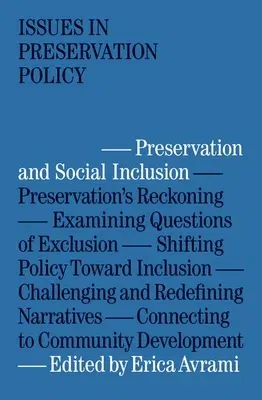Preservation and Social InclusionPaperback, 5 May 2020

Qty
1
Turbo
Ships in 2 - 3 days
Only 5 left
Free Delivery
Cash on Delivery
15 Days
Free Returns
Secure Checkout

Part of Series
Issues in Preservation Policy
Print Length
256 pages
Language
English
Publisher
Columbia Books on Architecture and the City
Date Published
5 May 2020
ISBN-10
1941332609
ISBN-13
9781941332603
Description
Product Details
Book Format:
Paperback
Country of Origin:
US
Date Published:
5 May 2020
Dimensions:
22.61 x
14.99 x
2.03 cm
ISBN-10:
1941332609
ISBN-13:
9781941332603
Language:
English
Pages:
256
Weight:
453.59 gm